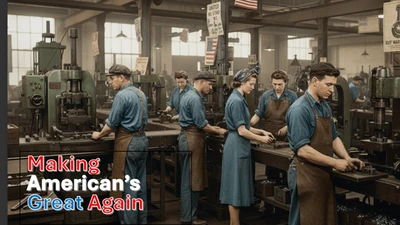Federal Reserve Chairman Jerome Powell has made a career out of projecting steadiness. His decision to keep interest rates unchanged at 4.25% to 4.5% reflects that familiar caution, but at this moment in history, steadiness risks becoming stagnation. America’s economy, already weighed down by inflation, slowing job growth, and rising borrowing costs, may not have the luxury of waiting.
Inflation Is Down, but Households Are Hurting
Yes, inflation has cooled from its 2022 peak of over 9%. But with core PCE inflation still hovering at 2.8%—above the Fed’s 2% target—the fight isn’t finished. Powell argues that cutting rates too soon could undo progress. Yet while he waits for “greater clarity,” everyday Americans are drowning under the weight of high borrowing costs. Mortgages, car loans, and credit cards have become more expensive. According to recent surveys, 77% of Americans say their incomes aren’t keeping up with inflation. For them, the Fed’s caution isn’t an abstract debate—it’s a financial squeeze.
A Slowing Economy Signals Trouble
The labor market, once Powell’s strongest argument for holding rates steady, is cooling. Unemployment has risen to 4.2%, and monthly job growth has slowed to about 150,000. Consumer confidence is faltering. Businesses are holding back on investment, not just because of rates, but also due to the uncertainty of President Trump’s aggressive tariff policies. Powell himself has acknowledged tariffs may drive prices higher while stifling growth, creating the worst-case scenario: stagflation.
The Case for a Small Cut
A modest quarter-point cut would not be reckless. In fact, it could demonstrate confidence in America’s economic resilience while providing immediate relief to households and small businesses. With rates already elevated, Powell has room to maneuver. A cut would not unleash runaway inflation, but it could ease pressure on families, support consumer spending, and reassure markets that the Fed is responsive rather than rigid.
Global Risks of Standing Still
The Fed’s stance has ripple effects far beyond U.S. borders. By keeping rates high, Powell strengthens the dollar, making American exports less competitive while putting strain on emerging markets burdened with dollar-denominated debt. Layer Trump’s tariffs on top, and global trade risks slowing further—the World Trade Organization has already warned of reversals in trade growth. Inaction at the Fed may amplify these risks, creating not just a domestic slowdown, but a global one.
A Test of Leadership
Powell’s defenders argue that resisting political pressure from the White House proves his commitment to Fed independence. That is true and commendable. But independence doesn’t mean immobility. Leadership in times of uncertainty requires more than waiting for perfect clarity—it requires decisive action to prevent small problems from snowballing into crises.
Powell faces a narrowing window. Inflation is cooling, the labor market is weakening, and consumers are struggling. If he continues to hold steady, he may find himself presiding over an avoidable downturn. A modest cut now could protect American households, steady global markets, and ensure that the Fed’s caution doesn’t become America’s self-inflicted wound.










